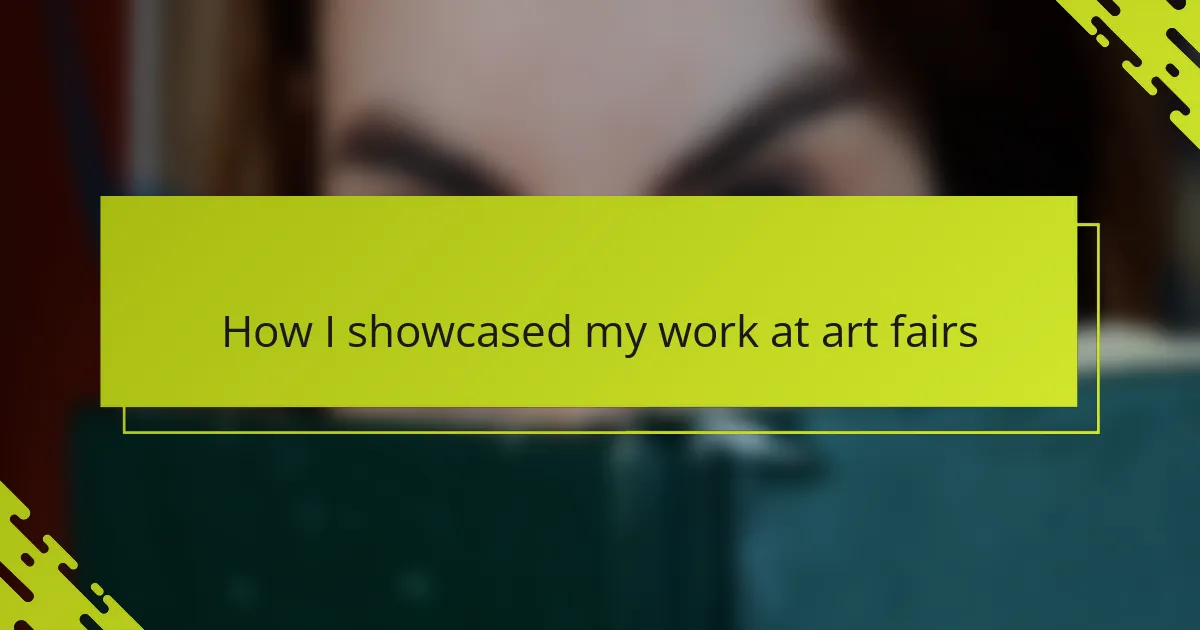Key takeaways
- Art fairs serve as vital spaces for artists to gain exposure, foster cultural exchange, and connect with diverse audiences.
- Preparation and presentation of artwork are essential, involving intentional decisions about layout, lighting, and engagement to create inviting environments.
- Networking with fellow artists and attendees can lead to meaningful conversations, inspiring collaboration and shared experiences that enrich the creative process.
- For queer women artists, showcasing work at art fairs is an opportunity to assert identity, build community, and engage in authentic dialogues about representation and visibility.
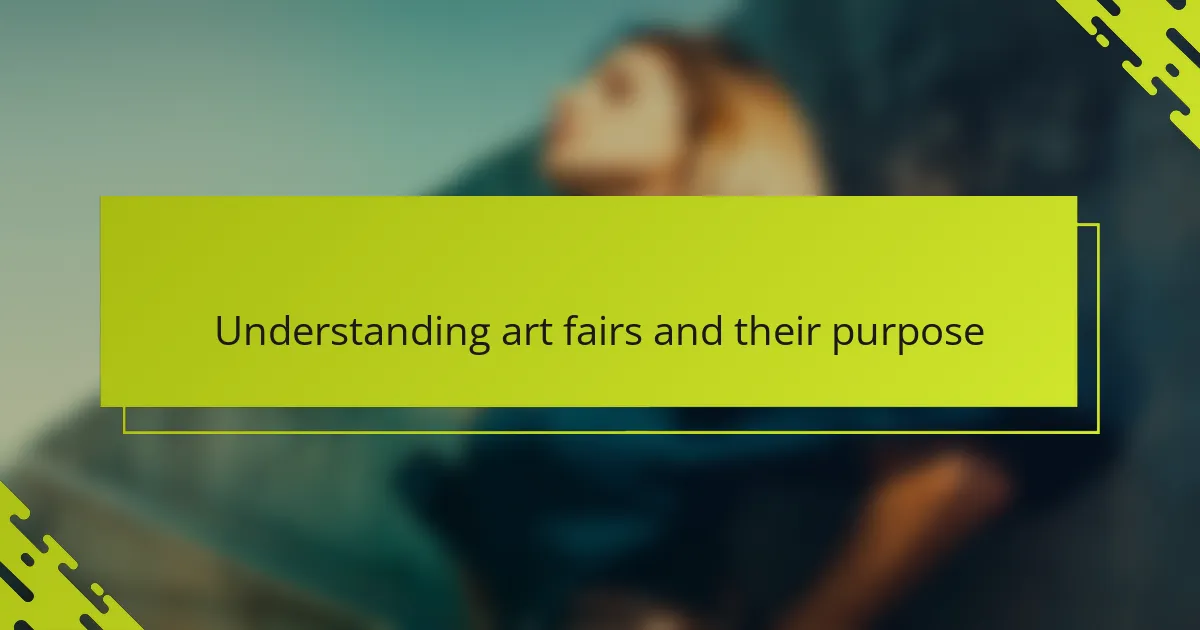
Understanding art fairs and their purpose
Art fairs are vibrant hubs where creativity meets community, bringing together artists, collectors, and enthusiasts in one shared space. From my experience, they aren’t just marketplaces; they’re stages for stories that art holds, waiting to be heard and felt. Have you ever walked into a room buzzing with energy and realized it’s not just about selling pieces, but sparking conversations and connections?
One thing I learned quickly is that art fairs serve multiple purposes: they help artists gain exposure, connect with new audiences, and test how their work resonates beyond studio walls. For me, showing up at these fairs was both exhilarating and nerve-wracking—it’s a unique mix of vulnerability and pride. You’re putting your inner world out there, hoping it finds a home in someone else’s heart or collection.
Why do art fairs matter beyond commerce? They cultivate a sense of belonging and cultural exchange, especially for communities often sidelined in mainstream art spaces. Participating in these events made me realize how essential it is to create visibility not just for my work but for diverse voices within queer women culture. It’s more than just selling art; it’s about asserting presence and sharing identities.
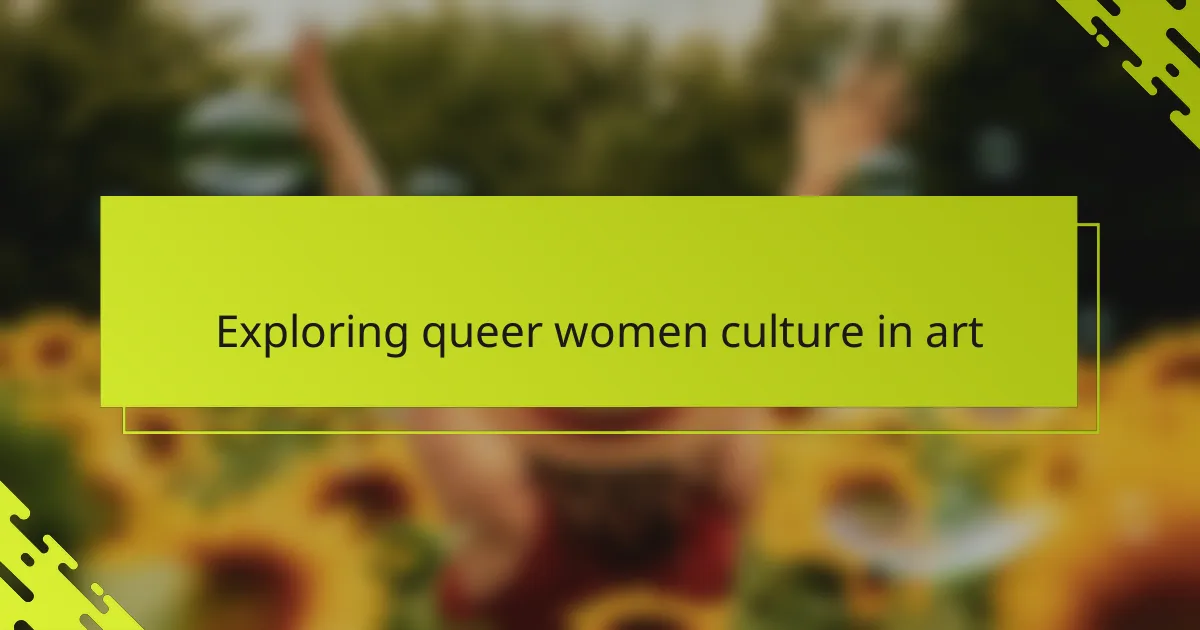
Exploring queer women culture in art
Queer women culture in art is an ever-evolving dialogue that defies simple definition, and exploring it felt like entering a vibrant labyrinth of stories and symbols. I found that the artworks often carry layers of identity, resistance, and celebration all at once—each piece a testament to the complexities of living authentically. Have you noticed how certain colors, shapes, or motifs seem to pulse with unspoken histories and whispered futures?
When I delved into this culture through my art, I saw firsthand how it challenges norms and invites viewers to rethink what they know about gender and love. It’s deeply personal, yet profoundly communal, like a shared breath in a room full of diverse voices. Sometimes, I caught myself holding my breath, struck by how raw and real those expressions were, reminding me why visibility matters so much.
What struck me most was how these artistic expressions create spaces where queer women aren’t just represented—they’re understood and honored. Through my journey, I realized this exploration isn’t about fitting into one category but embracing fluidity and multiplicity. Isn’t that the true power of art—to open doors into worlds we didn’t even know existed?

Preparing artwork for art fairs
Preparing artwork for art fairs took me deeper into what it means to present my work with intention. I remember spending hours carefully selecting pieces that not only resonated with my message but could also hold their own in a bustling, sometimes chaotic, environment. Have you ever felt the pressure of choosing what parts of your story to share, knowing not every piece can make the cut?
The way I prepared each artwork—framing, labeling, and even packing—felt like a ritual. It was about respect: respecting the work, the space it would inhabit, and the viewers who would engage with it. I learned that clarity and professionalism don’t diminish authenticity; instead, they create a welcoming entry point for connection.
I also asked myself how my work would communicate amidst the noise of the fair. Would it stand out, invite curiosity, or spark a conversation? This question guided my preparation and helped me arrange my pieces thoughtfully, ensuring each one had room to breathe and speak.

Creating a compelling booth presentation
Creating a compelling booth presentation felt like crafting a visual embrace—how could I make people stop, look closer, and feel invited rather than overwhelmed? I experimented with the layout, balancing openness with intimate corners where viewers could pause and connect deeply with my pieces. Was there a way to echo the rhythms and colors of queer women culture not just in the art but in the very space around it?
I discovered that lighting was more than practical—it set the mood, highlighting textures and hues that might otherwise go unnoticed. Choosing soft, yet focused illumination made the booth feel warm and alive, drawing people in gently rather than shouting for attention. It became clear to me that lighting was a silent storyteller, guiding eyes and hearts toward what mattered most.
Sometimes, simplicity spoke louder than cluttered abundance. I pared back excess and trusted that each artwork, given room to breathe, would tell its story powerfully on its own. Have you ever noticed how quiet spaces invite deeper reflection? I aimed to create that quiet within the buzz of the fair, making the booth a sanctuary amid the noise.
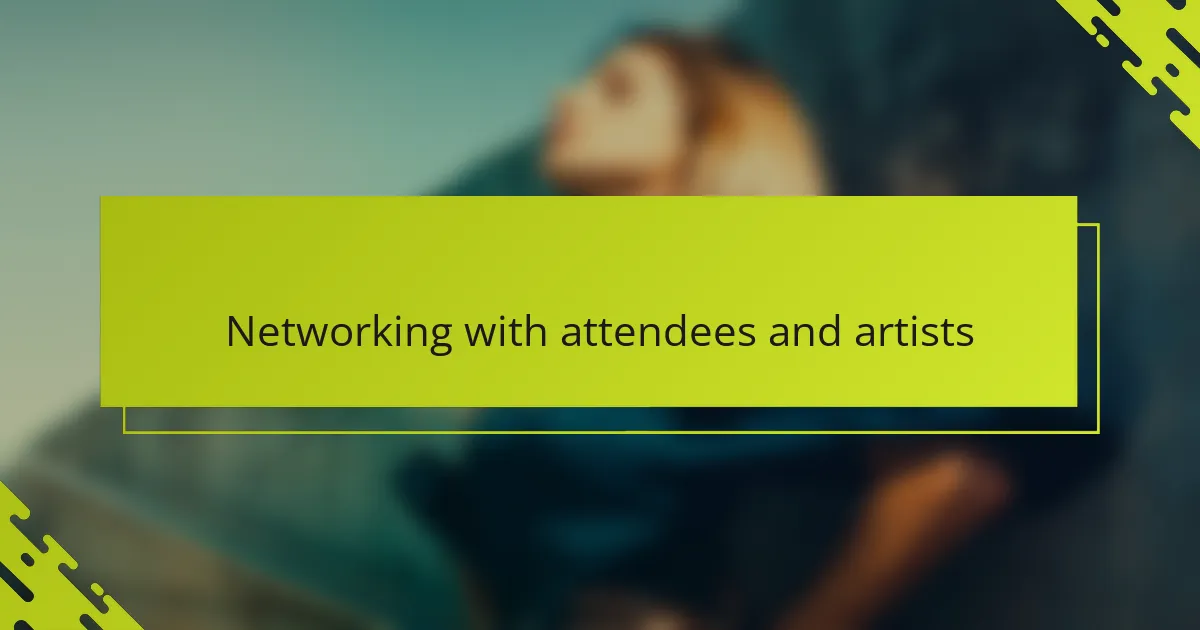
Networking with attendees and artists
Meeting attendees and fellow artists at the fair felt like stepping into a vibrant conversation I hadn’t expected but deeply welcomed. I found that genuine curiosity—asking about their own creative journeys or what drew them to a piece—opened doors to meaningful exchanges beyond surface-level compliments. Have you ever noticed how sharing stories can make strangers feel like collaborators or even friends?
Sometimes, I would linger near booths with other queer women artists, drawn by a silent understanding and mutual support. Those moments fostered a sense of community that felt crucial, especially in an environment that can sometimes feel competitive. Connecting with artists who shared similar experiences helped me see my work not just as individual expression but part of a larger tapestry.
What really surprised me was how attendees’ feedback and insights often sparked new ideas or pushed me to think differently about my own art. Networking wasn’t just about promoting my work—it became a source of inspiration and growth. Isn’t it amazing how dialogue can transform the way we see both art and ourselves?
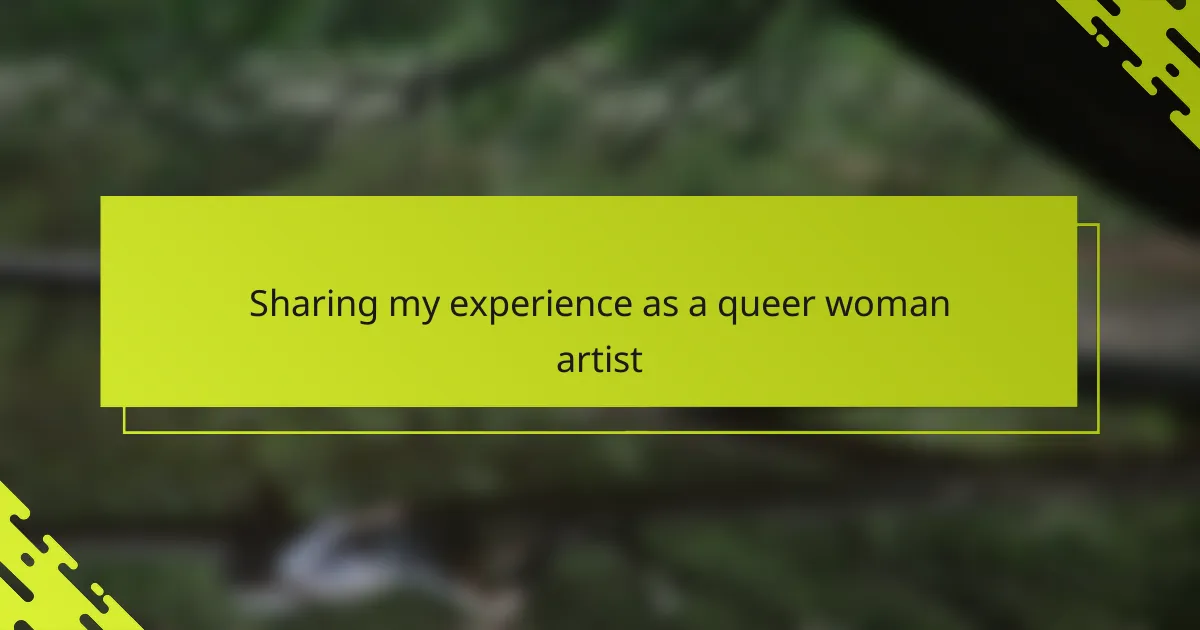
Sharing my experience as a queer woman artist
Sharing my experience as a queer woman artist at art fairs has been both a challenge and a triumph. I often felt the weight of representing not just my work but a broader community whose stories are frequently marginalized. Have you ever noticed how stepping into that role shifts the way you see your art—not just as creation, but as a statement of presence and identity?
There were moments when vulnerability bubbled up, especially when discussing themes that felt deeply personal. Yet, those conversations also became the most rewarding, reminding me that authenticity invites connection. It was as if every exchange peeled back a layer, revealing shared struggles and hopes that words alone couldn’t capture.
What surprised me most was how showcasing as a queer woman artist built bridges between strangers—bridges grounded in empathy and understanding. I realized that my work didn’t just occupy space on a wall; it opened doors to dialogue, fostering solidarity that felt as powerful as any brushstroke. Isn’t that the real magic of sharing art?
